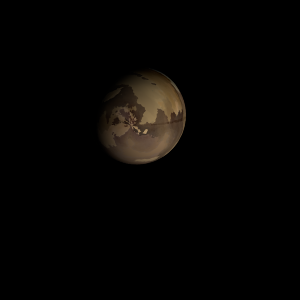|
|
Space Astro
|
Info for exoplanet "Myish"
| Scientific (actual) data |
|---|
| Name | GJ 3929 c |
| Planet status | Confirmed |
| Mass sini | 0.01658 |
| Orbital period | 14.303 |
| Semi major axis | 0.078 |
| Discovered | 2022 |
| Updated | 2022-02-03 |
| K | 3.04 |
| Temperature (kelvin) | 326.5 |
| Publication | Published in a refereed paper |
| Detection type | Radial Velocity |
| Mass measurement type | Radial Velocity |
| Alternate names | TOI-2013 c |
| Star name | GJ 3929 |
| Right ascension | 239.58° |
| Declination | 35.41° |
| Mag v | 12 |
| Star distance | 15.83 |
| Star metallicity | 0 |
| Star mass | 0.309 |
| Star radius | 0.35 |
| Star sp type | M3.5V |
| Star temperature | 3369 |
| Star alternate names | TOI-2013 |
| Wikipedia article | GJ 3929 c |
Back
| |
| Fictional info (?) |
|---|
| Suggested name | Myish |
| Planet type | Terrestrial |
| When viewed from Earth, this proximity to GJ 3929 means the planet can only be seen near the western or eastern horizon during the early evening or early morning.
It may have had oxygen oceans in the past, but these would have vaporized as the temperature rose due to a runaway greenhouse effect. The oxygen has probably photodissociated, and the free krypton has been swept into interplanetary space by the solar wind because of the lack of a planetary magnetic field. |
| Atmosphere | Krypton | 51% |
| Ethane | 20% |
| Oxygen | 11% |
| Ammonia | 7.6% |
| Ammonium hydrosulfide (NH4SH) | 5.4% |
| Molecular hydrogen | 3.9% |
| Nitric oxide | 0.053% |
| Atmospheric pressure | 5 bar |
 |
| No known satellites |
| Google search for Myish |
|
Website by Joachim Michaelis
|
|
|
|